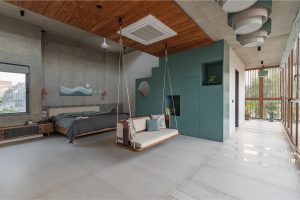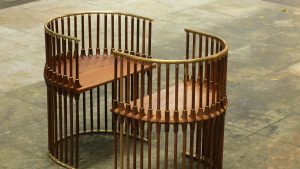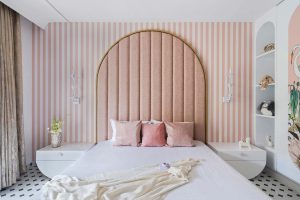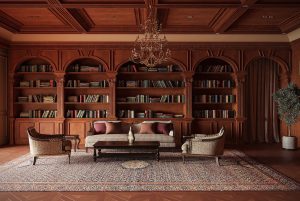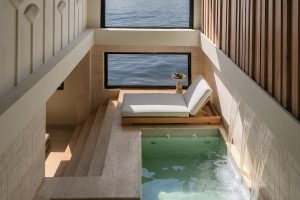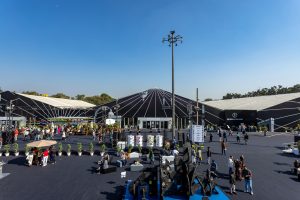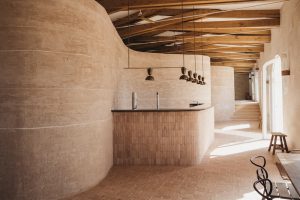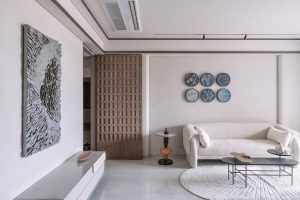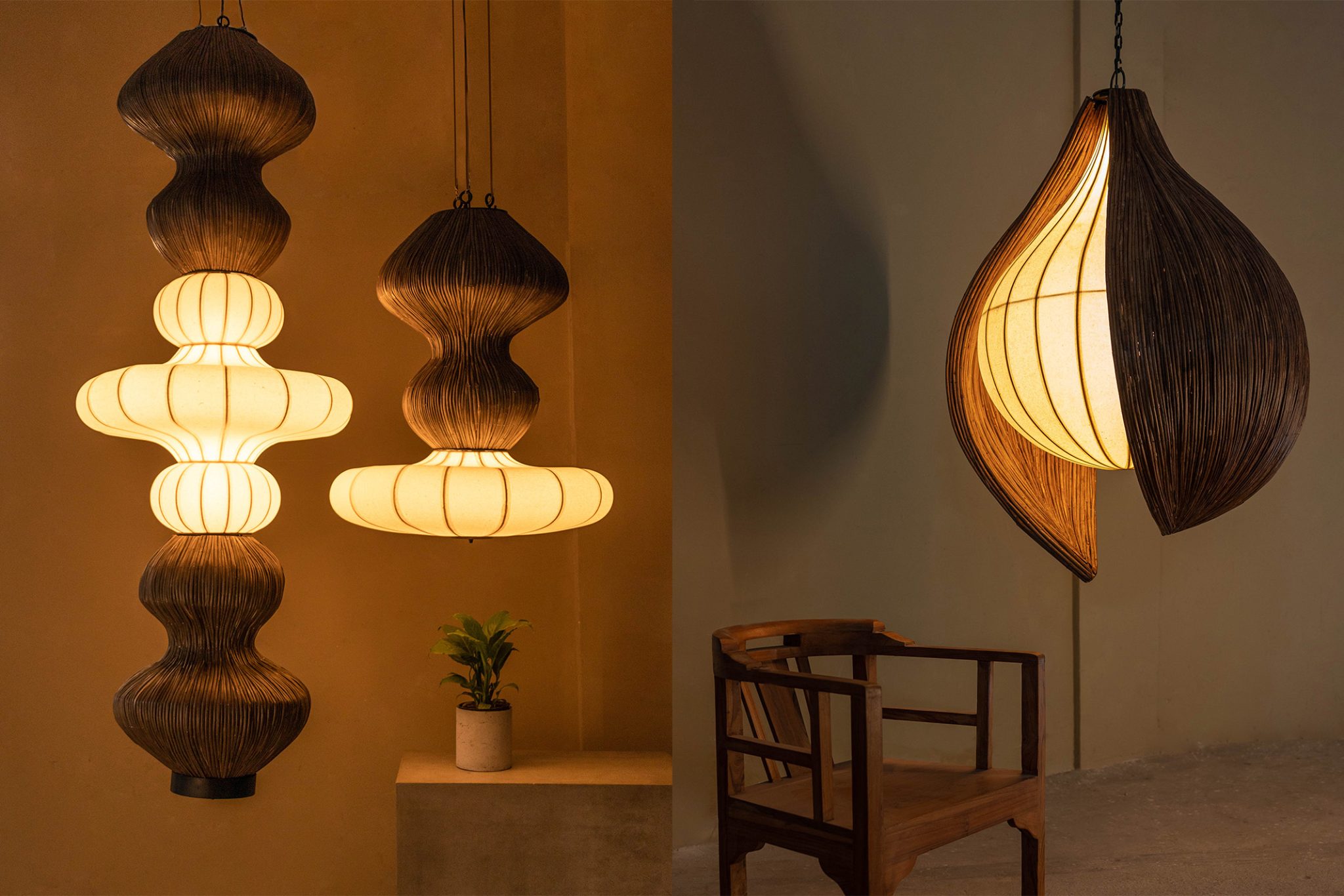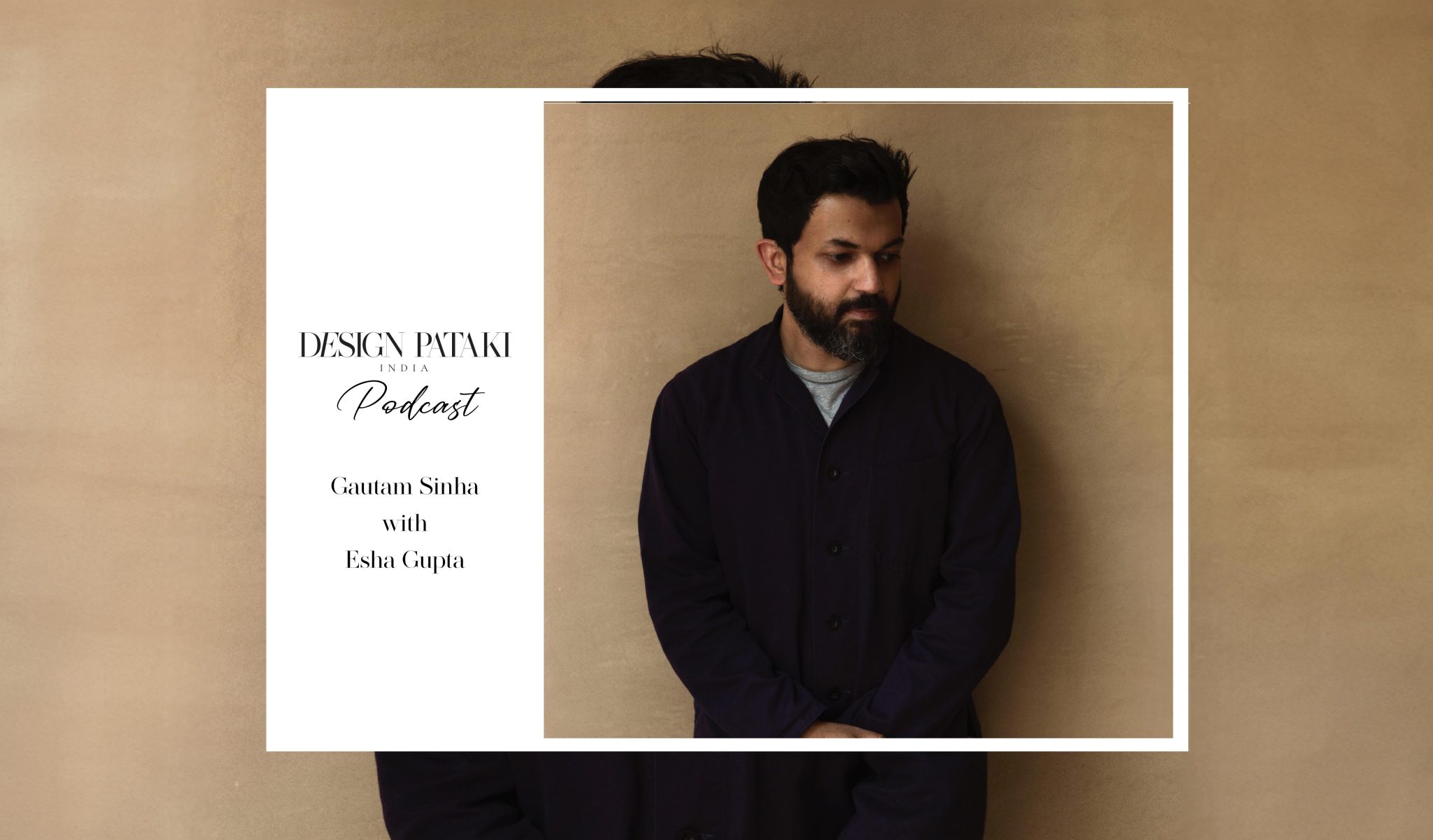5 Must See Collaborations At The 63rd Salone Del Mobile, Milan 2025
The 63rd Salone del Mobile.Milano draws 300,000 design fanatics into a whirlwind of innovation. DP curates 5 must-visit shows that blend emotion, sustainability, and trailblazing creativity.
- 8 Apr '25
- 3:47 pm by Simran Almeida
Design is to a city what roots are to a tree—a cloaked yet vital foundation. While some cities embrace the imperceptible tactics, others, like Milan, wear design as effortlessly as they do haute couture. Eminent for its architectural grandeur, revered ateliers, and dazzling legacy in the design realm, the economic capital of Italy—Milan—is set to host the 63rd edition of Salone del Mobile.Milano. Featuring over 2,000 exhibitors from 37 countries, the fair returns with a redesigned layout, immersive installations, and the multidisciplinary Euroluce biennial. In keeping with the core premise, this year’s theme—‘Thought for Humans’ centres on emotional intelligence, sustainability, and industrial innovation.
With immersive installations, inspiring talks, and masterclasses at the Euroluce International Lighting Forum, Salone reflects on the key themes in design interacting with the human body, mind, and emotions. SaloneSatellite, the global platform for designers under 35, spotlights emerging talent and innovative takes on craftsmanship. This year’s theme, ‘New Craftsmanship: A New World,’ brings together 700 young creatives and 20 leading design schools to explore the evolution of artisanal traditions. Amidst this bustling fair with its multifarious medley of shows, DP curates five spectacular shows that depict the essence of Salone 2025—a meet-cute between ingenuity and emotion.
1. Talk Talk By Jaime Hayon
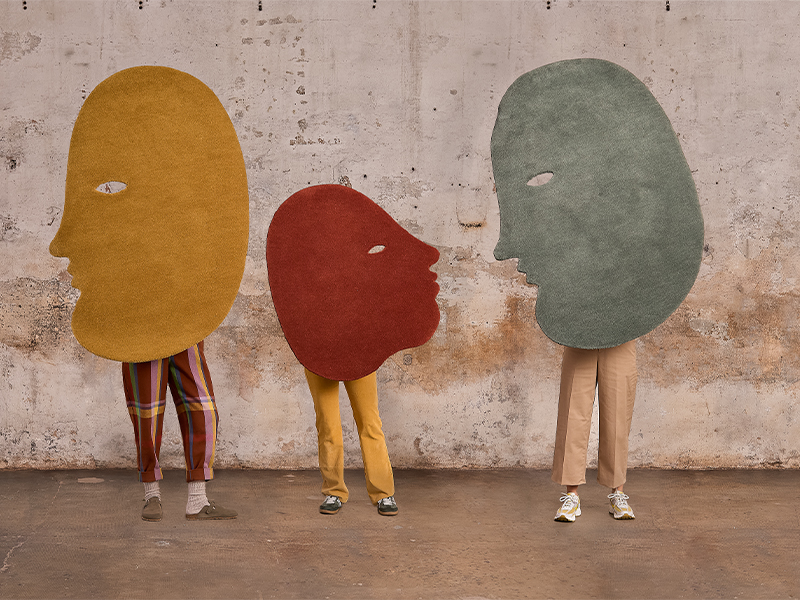
What if rugs could talk—not just grounding a room, but giving it voice through bold colours, playful faces, and their own vivid language? This is exactly what nanimarquina—the pioneering Barcelona-based rug studio founded by Nani Marquina in 1987—explores in its new Talk Talk series. “I wanted to design rugs that were visually stunning, that people would enjoy,” reveals Marquina. Crafted in collaboration with legendary Spanish artist and designer Jaime Hayon—known for his whimsical iconography and cross-disciplinary practice—this quaint collection anchors a space with equal doses of artistic expression and animated storytelling. Illustrated as fluid and emotive details, these rugs—hand-tufted in New Zealand wool—bring Hayon’s iconic, almost theatrical faces to life, bursting with personality, irony, and a flamboyant palette.
In contrast to the previous five collaborations—where Hayon’s art was translated onto textile as a canvas—each piece in the “Talk Talk” series journeys through the cultural fabric of India and Pakistan’s artisanal craftsmanship. With silhouettes of faces, this collection quite literally has a tête-à-tête with the space.
2. Fluid Realities By Karim Rashid
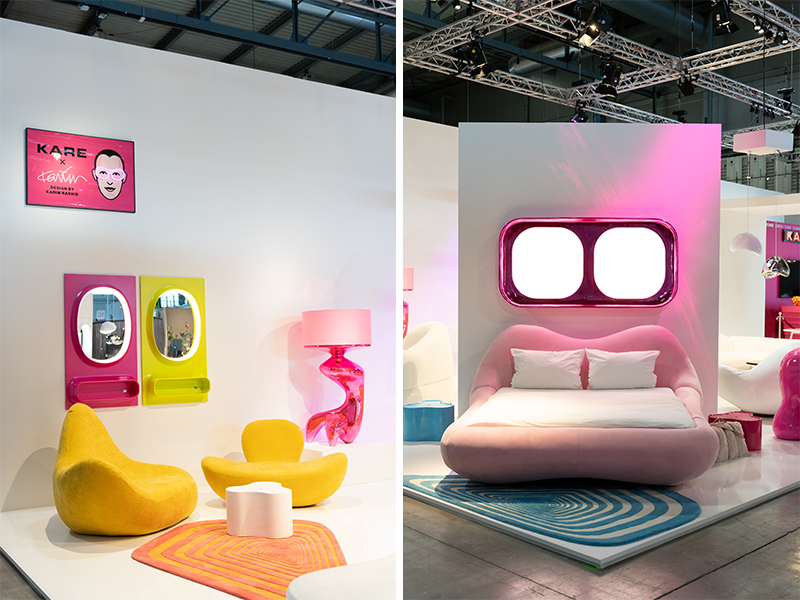
What if materiality could bend, flow, and glow—entangled between the tactile and the mystical? That’s the provocation at the heart of ‘Fluid Realities,’ a transcendent new collection by KARE, a Munich-based design house revered for its flamboyant spirit and eclectic collections. Consequently, the obvious choice while conceptualising a collaboration was Karim Rashid—an icon of contemporary design whose fluid forms and vibrant palette of pastels and neon have altered the visual language of modern furniture design. In keeping with this, Rashid unveils a suite of about 60 sculptural pieces—furniture and lighting that transcend mere utility, posing as artefacts of a neo-modernist design approach. “The specific mood and theme I wanted to convey through this collection is one of Sensual Minimalism, which blends clean lines, soft curves, and organic forms to create a warm, inviting atmosphere,” explains Rashid.
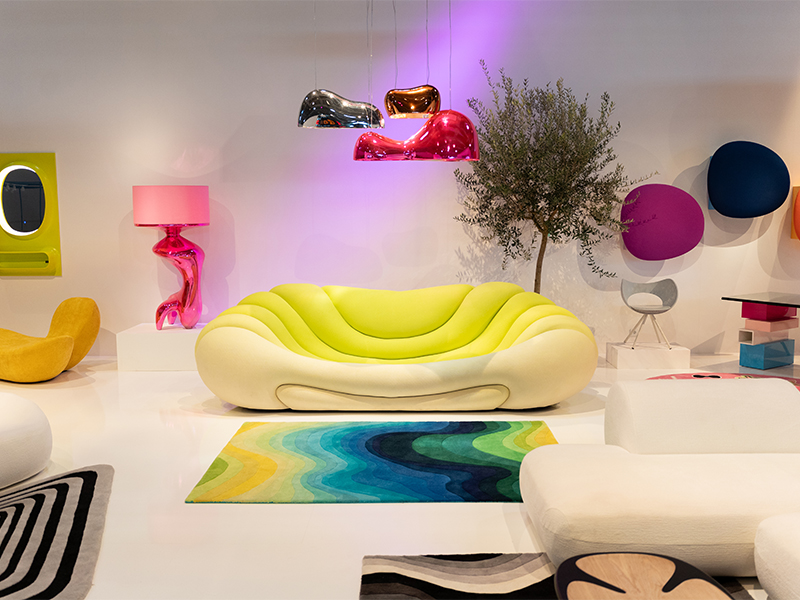
With bold forms, fluid curves, and a vibrant palette of electric blues, neon greens, and citrus yellows, these sculptural pieces—like the chair, table, and modular seating materialise—with a space-age vibe. Crafted from durable and recyclable material, the collection embodies a playful spirit, where Rashid “aims to inspire joy, wonder, and contemplation.”
3. La Dolce Attesa By Paolo Sorrentino
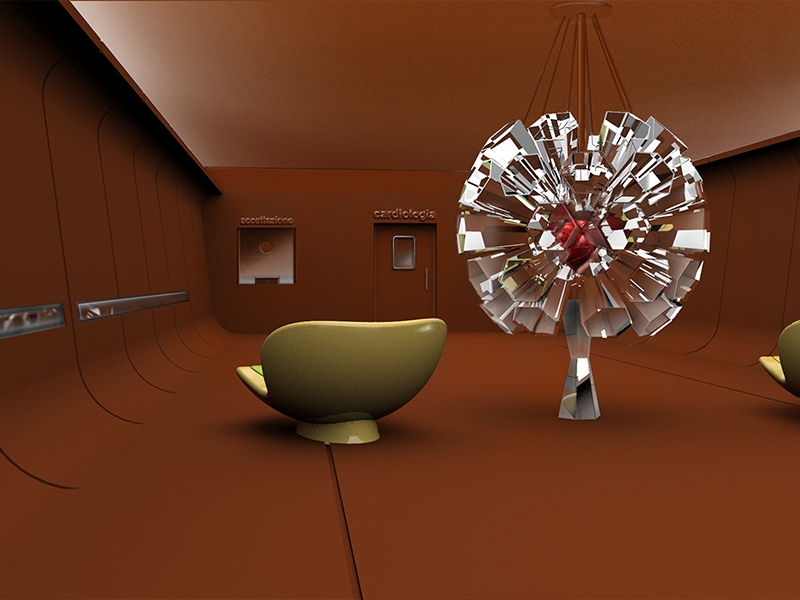
What could be more universal, more agonising, than the act of waiting? In an immersive installation titled ‘La Dolce Attesa’, the Oscar-winning director Paolo Sorrentino, transforms this liminal state into a deeply evocative spatial experience. Positioned at the entrance—a cinematic prologue—of the Pavilions 22–24, this space serves as a metaphorical threshold and a bridge between dread and desire. With scenography by Margherita Palli weaving a thespian mise-en-scène, and Max Casacci’s haunting soundscape orchestrating a rhythm of stillness and suspense, this installation conjures an ethereal waiting room. “Our waiting room aspires to be something else. It doesn’t force you to sit still, but lets you go. A little trip, like children, on reassuring rides,” remarks Paolo Sorrentino. Curated as a place of emotional suspension, ‘La Dolce Attesa’ lingers in the mind long after one leaves—urging a rethinking of how we experience time and uncertainty.
As Maria Porro, President of the Salone del Mobile.Milano. observes, “It is so in Sorrentino’s chosen setting—a hospital waiting room; as well as in any other context in which waiting is the measure by which we relate to the world, in our homes, at work, in an airport, wherever destiny takes us.”
4. Philippe Malouin And Olimpia Zagnoli At Acerbis

Acerbis—icon of Italian design since 1870—crafts a bold dialogue between past and present, where sculptural forms and vivid hues meet in a symphony of material and light. In keeping with this spirit, Acerbis presents the ‘Trench’ collection by British-Canadian designer Philippe Malouin, alongside ‘Gigiona’ by illustrator and multidisciplinary artist Olimpia Zagnoli. In the ‘Trench’ collection, Malouin reimagines upholstered seating through a lens of proportions—as a monolithic sculpture. Trench—a collection of armchairs and sofas that channels the spirit of Brutalism—features a seamless curve that cradles both seat and back, suspended weightlessly on perpendicular legs, rendering it at once stoic and sumptuous, elemental but also playfully aloof.
Also Read: Sculptural Bars & Fluid Forms: Inside Bengaluru’s 5 Stunning New Restaurants
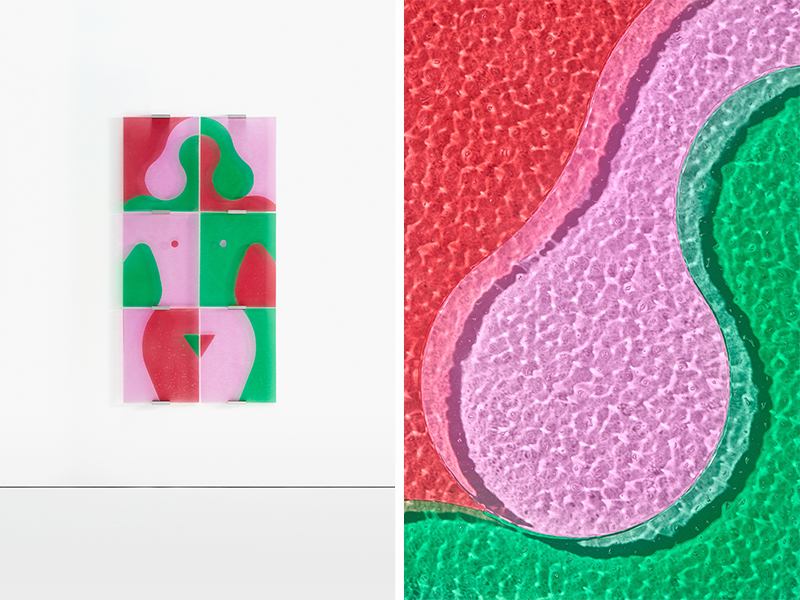
Among these fluid seatings, ‘Gigiona’—renowned for her pop-graphic femininity artworks—unfurls as a flamboyant ode to femininity: whimsical and lithe, balancing playful irreverence with sculptural character. This disassembled modular sculpture, crafted from Murano glass, reveals a woman’s silhouette which vanishes into kaleidoscopic fragments—each piece a standalone artwork, flickering with wit, transparency, and optical sleight of hand.
5. Glas Italia Introduces Collection With 8 Visionary Designers
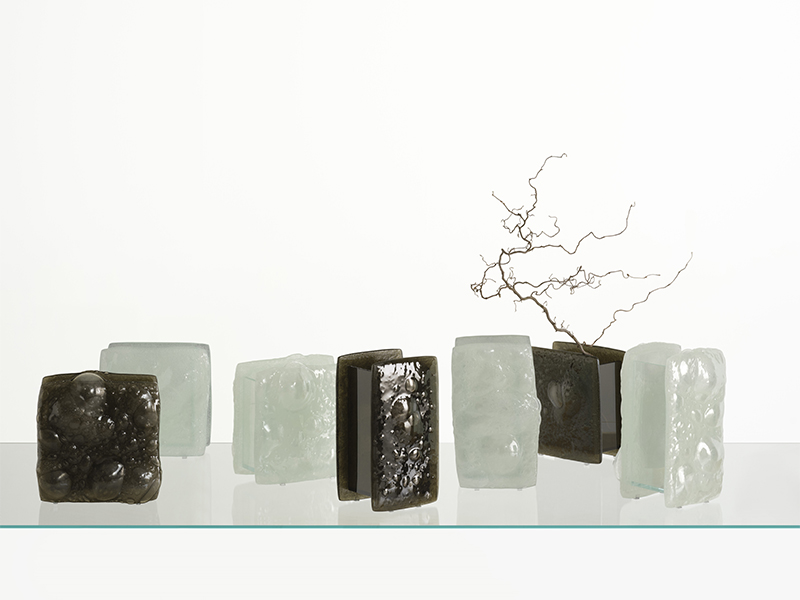
Glas Italia—a brand synonymous with unconventional craftsmanship—unveils an artistic collection where material becomes metaphor, and lucidity spins a tale as versatile as glass itself. Revered for its mastery in transforming glass, the Italian maison orchestrates collaborations with a pantheon of design visionaries: Michael Anastassiades, Ronan Bouroullec, Johanna Grawunder, Piero Lissoni, Philippe Starck, Patricia Urquiola, Tokujin Yoshioka, and Yabu Pushelberg. This symphonic ensemble of objects explores the potential of glass, while bending, breaking and affixing it.
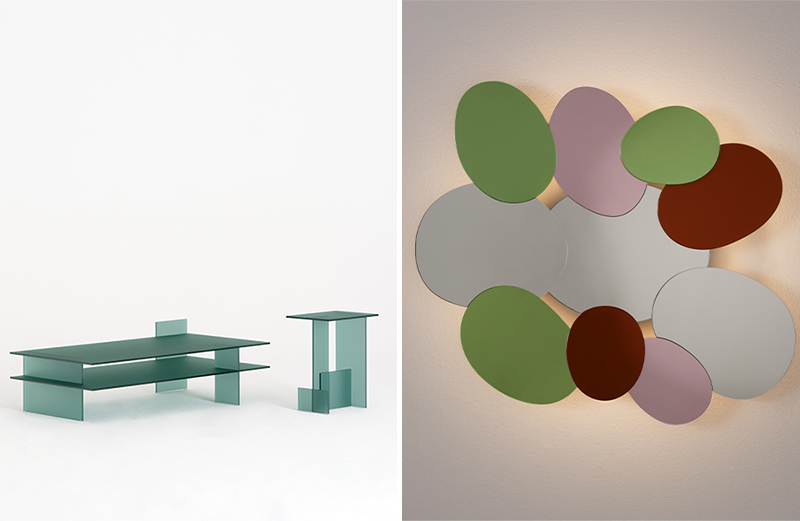
From French designer and artist Ronan Bouroullec’s silvered, rippling glass mirrors to Spanish architect and designer Patricia Urquiola’s blemished ‘Opalia’ series, the collection’s multifaceted character is defined by glass. American architect and artist Johanna Grawunder’s kaleidoscopic Bouquet and Japanese designer and artist Tokujin Yoshioka’s prismatic ‘i mirror’ turn reflection into reverie, while Italian architect Piero Lissoni’s thermally-twirled vases evoke a sense of mystique. The French industrial designer Philippe Starck distils minimalism into luminosity with his sparkling, silently radical ‘Crystal Table.’ With the debut of ‘Bay,’ a sleek partition system for bathroom’s wet zones, Glas Italia forays away from its crystalline lexicon.



